Mineral Restoration of Your Garden Soil Part II
Why You and Your Garden Soil Need Minerals
There are many ways to introduce needed minerals into your garden. One method starts with a soil test and adds or amends several different items or mixtures to get the pH level and major nutrients like N, P and K in appropriate ratios. Another is using multi animal manure compost worked into the soil. Both of these are good beginnings, but do not address the needed trace elements that are limiting factors when not present. They not only increase the garden’s yield, but also plant and soil health. This in turn increases our health, as these trace elements are also limiting factors in our health when not present in sufficient amounts.
For instance, Boron increases calcium uptake, promotes flowering and pollen production and is essential for strong plant growth. It also activates Silicon, which carries all of the other nutrients. Copper is a plant immune system regulator, controls mold and fungi, is an important chain in photosynthesis and helps increase the plant’s stalk strength. Manganese helps with nitrogen utilization, is a key factor in pollinization and aids in the utilization of energy from the cells for the plant. Zinc improves phosphorus utilization, helps regulate the plant’s growth including leaf size, corn ear size, hastens maturity and contributes to increased weight of fruits and vegetables.
As can be seen, these trace elements play a very important role in the overall production of healthy plants, fruits and vegetables. Properly mineralized soils offer not only better nutrition and health for the plant but pest and disease resistance as well. In corn, once enough copper is in the soil and taken up by the plant, grasshoppers won’t come into the fields, so insect pressure and damage are greatly reduced. Weed pressures decrease, as weeds have been shown by recent research to be indicator species for soil problems. Specific weeds will show up where specific minerals or trace elements are missing from the soils. Tissue tests of the weeds in relation to soil tests taken at the weed roots shows this. Improvements to the soil will cause weeds to “move” to areas of problem soils. Jay L. Mc Caman has published “Weeds and Why They Grow”, a look at over 800 different weed species and the soils that they grow in. As an example, burdock grows in soils with very high levels of iron and sulfate, very low levels of calcium and manganese. Mineralize the soil, lose the weed!
Insects are another indicator species, preying on weak, diseased and malnourished plants. They prefer lower brix, or plant sugar levels. Vibrant, healthy plants have a higher brix level than stressed or diseased ones. Experience shows that improved soils will decrease insect pressure, as brix levels increase, insects move on. In fact, several studies and practical observations have shown that as soil improvement occurs, insects move out followed by weeds. Then the insects start eating the weeds, as they have lower brix levels than your garden!
Combining these benefits with charcoal accelerates the process in a positive direction. Charcoal acts as a nutrient and trace element sponge, allows the soil food web to build much more organic carbon, living biomass & glomalins (soil glue) in addition to building soil infrastructure. The old adage of “Feed the Soil Not the Plants” becomes; “Feed, Clothe and House the Soil, utilities included!”
We have chosen AZOMITE because it is easy to apply, safe to use and extremely effective. It is also completely organic or natural, meaning there are no man-made ingredients. It is simply powdered Utah volcanic rock dust that has about 70 minerals and trace elements, nothing more. The recommended application for gardens is 1 pound to 25 square feet of garden. It can also be sprinkled around established plants or trees and watered in. For “charging” charcoal in the compost pile, I recommend 1 cup per 2 pounds of crushed charcoal, mixed into the compost for 6 months prior to application to the garden. Once again, we have no connection whatsoever with AZOMITE, they don’t even know we are talking about them.
Several studies with several vegetable plants show taller plants, larger diameter branches/stems, larger leaves with earlier fruiting, more prolific production of fruit, longer production and earlier first fruits with mineralized soils. Nutritional analysis of vegetables show higher levels of minerals and trace elements, showing that the soil minerals are more bio-available. More nutrition for plant = more nutrition in veggies = more nutrition for us. Better production in the garden means more veggies, which greatly increases the value of the garden and the value of its produce, especially in today’s market with much higher prices with lower quality produce available. Makes it much easier to grow your own food.
Better soil; bigger, healthier plants and vegetables; earlier, larger yields and better taste, nutrition and health for you- all from a few simple ingredients and preparation of your garden soil. This is the wonder of biological and sustainable agriculture, no matter the size of the “field”. As one farmer put it, “It’s not hard, it’s just different.” It’s a different way to look at gardening, but once some understanding is reached, knowledge and experience gained, it’s much more rewarding on many levels to work with the soil and plants this way, instead of trying to force them to work how we think they should, or want them to. Another benefit to this approach is that the applications last a long time- in the case of charcoal, at least 100-300 years, and the AZOMITE can last 3-5 years in hungry soil, longer in a more balanced one.
As always, please send in your comments and questions!
Next up will be a discussion of compost and the many approaches to building the best compost yet!

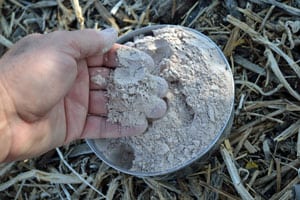
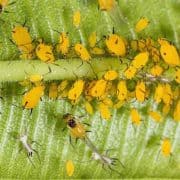
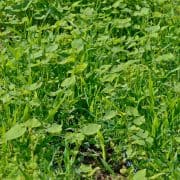
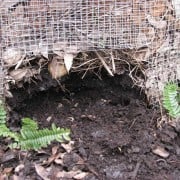
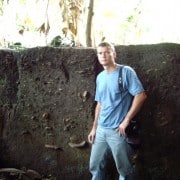

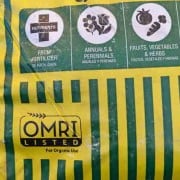

I always read your writings, quite practical and totally logical! I want to use Azomite for container gardening. Do you have any recommendations how to mix easily available from the store organic ingredients with it? As in what porportion of each ingredient, and how much Azomite? Thank you in you in advance.
Hi there Stephen and Cindy! You do find the most interesting articles to share! I really was intrigued by the charcoal and azomite concepts as we’ve been gardening this soil for 30 years now with just horse manure and compost and suspect it is somewhat depleted as plant just don’t seem as vigorous as they were the first 5 years or so. Thanks so much for your diligent research and desire to share so openly. You are the best! Julie
Thanks, Julie! Good to hear from you, hope things are going well.
I think that the Azomite/charcoal/compost recipe will be just the thing to get your garden soil back to being very fertile and productive again. Sam’s Club has the best price on charcoal- a 40 lb bag for about $18.00. We ordered our Azomite from Peaceful Valley in Ca, they had the best price when shipping was considered. Get the 44 lb bag, it’s good for the horses and other animals as well.
Thanks for the encouragement, Dianne! Sometimes you wonder if what you are writing is really being read by others…
The Azomite website suggests 1 lb for every 25 sq. ft. of gardening row as a start. For containers, I would use 1 oz per container up to 12 inches to start. The good thing is you really have to overload the Azomite before you see negative results! On larger pots, use 2 oz as a start and monitor how they do.
Hi Stephen-
Good to see you writing about the importance of minerals.
Azomite is excellent as a source of micro-trace minerals and I use and recommend it for most growers. Unfortunately it is not a good source for things like Copper, Boron, Zinc, etc; all of these are needed in much larger quantities than Azomite or any “rock dust” usually supplies.
Here is the mineral analysis for Azomite:
http://www.azomite.com/index.php?option=com_content&view=article&id=66&Itemid=11
Any good growing soil needs at least 1 part per million Boron and 2 ppm Copper. Azomite contains ~29ppm Boron and 12ppm Copper. In order to add 2ppm Copper to the top 6″ of soil, one would need to apply around 150,000 lbs/acre of Azomite, or 3,500 lbs per 1000 sq ft. Not going to happen, and if it did it would be adding far too much of other minerals. It’s much better to apply the minor minerals like Copper and Boron in purified form, just like when you buy minerals at the health food store. If you need copper, you buy and add copper, not something with a micro-amount of copper and a lot of things you don’t need. The USDA organic rules recognize this and allow the use of purified minerals.
There’s actually a pretty advanced science of soil mineral balancing for organic and alternative agriculture that is only recently becoming more widely known. Here’s an intro to the subject at my web site, and there is a lot more free info there for anyone interested.
http://www.soilminerals.com/AgricolaI.htm
Best-
Michael Astera
Michael-
Thanks for the great information! You are absolutely right, as Boron is the start of the biochemical sequence and is one of the trace elements in Azomite.
You have anticipated the next post in the soil building series, which is the importance of having a complete soil analysis done to know where you are in terms of mineral balance in the soil, and adding what is needed from natural reserves. I’ve wanted to get the basics in and get the soil building process started, then introduce the tuning methods of the complete soil analysis.
Hi! I was wondering if you could tell me if you think adding Azomite to our native soil (here in the Phoenix valley) would be redundant? I’ve heard our soil has a good mineral content but is just lacking in organic material. I have a bag sitting on the back patio and am intending to put it in my raised beds that have no native soil but I have a few other beds that are a combination of native and compost. I really enjoy your newsletter and website and seeds! thanks!
Hi Nicole-
Thanks so much for the comments, helps to know that the work is appreciated!
Azomite is a good start to just about any garden soil, as it has 70 minerals and trace elements. Many soils that are considered to be high in mineral content will be lacking in a few minerals, and lacking in most of the trace elements, as these are stripped out for use by the plant during growing, flowering and fruiting to produce food. These simply must be replaced to maintain a healthy soil that supports healthy plants and food year after year. Something to remember, if you haven’t had your soil tested by a professional testing lab, then you really don’t know exactly what is in your soil. Crop Services International- http://www.cropservicesintl.com/ld_SoilTests.php is a great place to do a complete soil test and will offer balance recommendations from their 30+ years of experience for a fair and reasonable price.
You are completely correct that native Phoenix low desert soils are lacking in organic matter, that’s where a complete compost really helps things.
Hi Stephen, I have been raised bed vegetable gardening for 20 years and fear I have depleted my minerals, perhaps through use of fertilizers. Last year, the onions and beets did not grow at all. I have been told that composted chicken manure is the way to add minerals. It’s hard to get around here – I do have a friend with a pile but have heard it needs a long time to break down and not burn the plants. I am thinking of going the route of bagged composted chicken manure – a product called Cheep Cheep. Do you know anything about this product and if so, could you share any thoughts. There’s something about adding powdered rock from Utah to New England soil that just seems off to me. I’d be willing to try it, though.
Betsy, any composting will be done in 6 – 9 months. Fresh chicken manure, along with cow manure is “hot” or high in Nitrogen and can burn the soil and plants if used before it has decomposed. I’m not familiar with Cheep Cheep, but do some research and reading and you’ll find out if it is a quality company. Any rock dust will help re-mineralize exhausted soil, so look around your area to see if there are counter-top makers that make granite counter-tops, as the granite dust can help. Just make sure that you are only getting the granite dust and not synthetic materials.
The Utah rock dust is the result of ancient volcanic eruptions that were then covered by seas, so it has both deep earth and sea minerals in it, making it very beneficial and unusual. Another product – SEA- 90, is dehydrated Gulf of California sea water that has all the sea minerals in it. both are very beneficial and will replace the minerals that have been lost and can’t really be replaced by local methods.